
100% vlna
od 57.00 Kč /50g
Cenu za klubka počítáme podle spotřeby při výrobě modelu v nejmenší velikosti a nejlevnější variantě příze. Rádi byste ještě lepší cenu? Třeba ji najdete mezi DROPS Deals!
Tangerine
Souprava: šála, čepice a rukavice – palčáky pletené chytovým patentem a vroubkoým vzorem z příze DROPS Snow.
DROPS design: model č. ee-601
Skupina přízí E nebo C + C
----------------------------------------------------------
ŠÁLA:
Rozměry: 35 x 150 cm
Materiál:
DROPS SNOW firmy Garnstudio (spadá do skupiny přízí E)
450 g, barva č. 07, oranžová
Použitou přízi můžete také nahradit některou ze seznamu:
"Náhradní příze (Skupina přízí E)" – viz link níže.
DROPS KRUHOVÁ JEHLICE (40, 60 nebo 80 cm) č.9 – nebo velikosti potřebné k upletení zkušebního vzorku o rozměrech 10 ok a 14 řad lícovým žerzejem = 10 cm na šířku a 10 cm na výšku.
----------------------------------------------------------
ČEPICE:
Velikost: S/M – M/L
Obvod hlavy: 56/58 - 58/60 cm
Materiál:
DROPS SNOW firmy Garnstudio (spadá do skupiny přízí E)
150-150 g, barva č. 07, oranžová
Použitou přízi můžete také nahradit některou ze seznamu:
"Náhradní příze (Skupina přízí E)" – viz link níže.
DROPS PONOŽKOVÉ JEHLICE a krátká KRUHOVÁ JEHLICE (40 cm) č.8 – nebo velikosti potřebné k upletení zkušebního vzorku o rozměrech 11 ok a 15 řad lícovým žerzejem = 10 cm na šířku a 10 cm na výšku.
----------------------------------------------------------
RUKAVICE:
Velikost: S/M – M/L
Materiál:
DROPS SNOW firmy Garnstudio (spadá do skupiny přízí E)
150-150 g, barva č. 07, oranžová
Použitou přízi můžete také nahradit některou ze seznamu:
"Náhradní příze (Skupina přízí E)" – viz link níže.
DROPS PONOŽKOVÉ JEHLICE č.5 – nebo velikosti potřebné k upletení zkušebního vzorku o rozměrech 14,5 oka a 18 řad lícovým žerzejem = 10 cm na šířku a 10 cm na výšku.
----------------------------------------------------------
-------------------------------------------------------
Náhradní příze – Podívejte se, jak změnit přízi
Skupina přízí A až F – Neměňte návod, změňte přízi
Spotřeba příze při použití náhradní příze – Využijte náš převodník
-------------------------------------------------------

100% vlna
od 57.00 Kč /50g
Cenu za klubka počítáme podle spotřeby při výrobě modelu v nejmenší velikosti a nejlevnější variantě příze. Rádi byste ještě lepší cenu? Třeba ji najdete mezi DROPS Deals!
- Česky
- Dansk
- Deutsch
- Eesti keel
- English (UK/cm)
- English (US/in)
- Español
- Français
- Íslenska
- Italiano
- Magyar
- Nederlands
- Norsk
- Polski
- Português
- Suomi
- Svenska
- English (UK/cm), Bulgaria
- English (UK/cm), Croatia
- English (UK/cm), Greece
- English (UK/cm), Latvia
- English (UK/cm), Lithuania
- English (UK/cm), Romania
- English (UK/cm), Slovenia
- Česky, Slovakia
Návod
Pleteme střídavě 1 kruhovou řadu hladce, 1 obrace. 1 vroubek = 2 kruhové řady.
VZOR:
Viz schémata A.1 a A.2. Zobrazeny jsou všechny řady vzoru nahlížené z lícové strany.
TIP - PŘIDÁVÁNÍ:
Přidáváme nahozením; v následující řadě pleteme nahození za zadní nit, aby se v pletenině netvořily dírky.
----------------------------------------------------------
ŠÁLA:
Pleteme v řadách na kruhové jehlici.
Na kruhovou jehlici č.9 nahodíme 35 ok a prvních 30 ok pleteme vzorem A.1; řadu končíme prvními 5 oky vzoru A.1. Takto pokračujeme v pletení vzoru. Když je šála dlouhá 150 cm, všechna oka uzavřeme.
TŘÁSNĚ:
Ustřihneme si 6 vláken příze, každé o délce 50 cm (= 1 třásnička). Přeložíme je napolovic a vzniklou smyčku protáhneme z lícové strany mezi oky chytového patentu v počáteční (nahozené) i v poslední (uzavřené) řadě; smyčkou pak provlečeme konce příze a stáhneme. Po 1 třásni navážeme také do obou “rohů”, krajních ok = na každém krátkém okraji šály máme 7 třásní.
----------------------------------------------------------
ČEPICE:
Pleteme v kruhových řadách na krátké kruhové jehlici. Podle potřeby převedeme pleteninu na ponožkové jehlice.
Na krátkou kruhovou jehlici č.8 nahodíme 54-60 ok a pleteme lem pružným vzorem 1/1 (tj. střídáme 1 oko hladce, 1 obrace – začínáme 1 okem obrace). Když je lem vysoký 14 cm, začneme plést vzor A.1 (= v kruhové řadě máme 9-10 sekvencí vzoru). Takto pokračujeme až do výše 27-28 cm. Pak pleteme nad všemi oky pružným vzorem 1/1. Ve výši 29-30 cm spleteme každá 2 oka hladce = 27-30 ok. Pak upleteme 1 kruhovou řadu hladce a poté opět spleteme každá 2 oka hladce = 14-15 ok.
Přízi odstřihneme, protáhneme zbylými oky, stáhneme a zapošijeme.
Čepice je vysoká asi 32-33 cm.
----------------------------------------------------------
RUKAVICE - PALČÁKY:
LEVÁ RUKAVICE:
Pleteme v kruhových řadách na ponožkových jehlicích.
Na ponožkové jehlice č.5 nahodíme přízí Snow 28-32 ok a pleteme pružný lem, takto: *1 oko hladce, 1 obrace*, *-* opakujeme v průběhu celé kruhové řady. Když je lem vysoký 6 cm, pleteme nad všemi oky vzor A.2 (= v kruhové řadě máme 7-8 sekvencí vzoru). Ve výši 12-13 cm přidáme na obou stranách 1. oka v kruhové řadě 1 oko (= klínek pro palec) – viz TIP - PŘIDÁVÁNÍ! Dál přidáváme na obou stranách vznikajícího klínu, a to v každé 2. kruhové řadě, celkem 4-5x (přidaná oka pleteme VROUBKOVÝM VZOREM – viz výše) = 36-42 ok. Pak odložíme 9-11 ok palce na pomocnou jehlici a za nimi nahodíme 1 oko nové = 28-32 ok. Pokračujeme vzorem A.2 až do výše asi 22-24 cm, končíme tak, aby následující kruhové řada byla pletená hladce. První 2 oka v každé sekvenci vzoru A.2 spleteme hladce = 21-24 ok. Upleteme 3 kruhové řady. V následující kruhové řadě spleteme poslední 2 oka v každé sekvenci vzoru hladce dohromady = 14-16 ok. Upleteme 3 kruhové řady. V další kruhové řadě spleteme každá 2 oka hladce = zbývá 7-8 ok. Přízi odstřihneme, protáhneme zbylými oky, stáhneme a zapošijeme.
PALEC:
Odložených 9-11 ok palce vrátíme z pomocné jehlice zpět na ponožkové jehlice č.5 a navíc k nim nabereme 2 nová oka z okraje za nimi = 11-13 ok rozdělených na ponožkové jehlice. Pokračujeme v kruhových řadách vroubkovým vzorem do výše asi 5-6 cm (měřeno od místa, kde jsme oka vrátili z pomocné jehlice zpět na jehlice). V následující kruhové řadě spleteme každá 2 oka hladce = na jehlicích zbývá 6-7 ok. Přízi odstřihneme, protáhneme zbylými oky, stáhneme a zapošijeme.
PRAVÁ RUKAVICE:
Pleteme stejně jako levou rukavici.
Schéma

|
= lícový žerzej (líc hladce, rub obrace) |

|
= rubový žerzej (líc obrace, rub hladce) |

|
= pravou jehlici vpíchneme do oka z předchozí kruhové řady, upleteme 1 oko hladce a oka spustíme z jehlice |

Jak můžete zacházet s našimi návody? Můžete sdílet DROPS návody online, s použitím původní fotky, uvedením originální příze, jména a čísla modelu. Ale JE ZAKÁZÁNO jakkoli reprodukovat či kopírovat celé návody v digitální podobě. Obchody s přízí mohou využívat databázi DROPS návodů k podpoře prodeje našich produktů. Návody si můžete vytisknout v libovolném počtu kopií. Žádáme vás o jedinou věc: nedělejte žádné úpravy a změny v tištěném originálu, ani původní návod v tištěné podobě nijak nedoplňujte. A také respektujte pravidlo DROPS a návody poskytujte klientům zdarma. Vydavatele, kteří by rádi zveřejnili naše návody v tištěných knihách nebo časopisech, prosíme, aby nás kontaktovali - rádi jim poskytneme podrobnější informace. Prodej výrobků vytvořených podle návodů DROPS je povolen pouze v případě, že jde o prodej jednotlivých kusů nebo výrobu na zakázku. Větší komerční využití návodů dovoleno není. U každého výrobku musí být rovněž jasně a zřetelně uvedeno, že jde o výrobek podle modelu z kolekce DROPS DESIGN. Opatřit nášivkami či visačkami oděvy, které využívají DROPS DESIGN je podmíněno uvedením následujícího textu: "Model DROPS DESIGN vytvořil/a...(doplňte jméno člověka, který oděv vyrobil)". Použití fotografií DROPS pro marketingové účely/prodej je povoleno výhradně v přímé souvislosti s použitím/prodejem přízí, pomůcek a doplňků DROPS. Fotografie nesmí být vystřižené, ořezané ani jinak upravené a logo na nich musí zůstat zřetelně viditelné.
Vyhrazujeme si právo kdykoli stáhnout povolení k užívání, a to bez udání důvodu.
Každý náš návod je doprovázen speciálními video-ukázkami, které vás navedou.
Tyto podrobné video-návody vás povedou "krok za krokem":
Proč je napětí příze u pletení/ háčkování tak důležité?
Napětí příze (hustota úpletu) určuje konečné míry vaší práce a obvykle se měří na vzorku 10 x 10 cm. Spočítáme takto: počet ok na šířku x počet řad na výšku - např.: 19 ok x 26 řad = 10 x 10 cm.
Napětí příze je velmi individuální; někteří lidé pletou/ háčkují volně, zatímco jiní značně utahují. Napětí příze přizpůsobíte změnou velikosti jehlic, proto doporučenou velikost jehlic berte pouze jako vodítko! Je důležité, abyste zajistili, že VAŠE napětí příze odpovídá napětí uvedenému ve vzoru. Pokud budete pracovat s jiným napětím příze než je uvedeno ve vzoru, vaše spotřeba příze a konečné rozměry vaší práce se budou lišit.
Napětí příze také určuje, které příze je možné vzájemně zaměňovat. Pokud dosáhnete stejného napětí příze, můžete snadno zaměnit jednu přízi za druhou.
Viz lekce DROPS: Jak změřit napětí příze/ zkušební vzorek
Viz video DROPS: Jak vypracovat zkušební vzorek napětí příze
Jak zjistím, kolik klubek příze potřebuji?
Požadované množství příze je uvedeno v gramech, např.: 450 g. Pro výpočet potřebného množství klubek musíte nejdříve vědět, kolik gramů je v 1 klubku (25 g, 50 g nebo 100 g). Tyto informace jsou dostupné po kliknutí na jednotlivé druhy přízí na našich stránkách. Vydělte požadované množství množstvím každého klubka. Pokud má například klubko 50 g (nejběžnější množství), výpočet bude následující: 450 / 50 = 9 klubek.
Mohu použít jinou přízi než jaká je doporučena u vybraného vzoru?
Při záměně jedné příze za druhou je důležité, aby napětí příze (hustota úpletu) při pletení/ háčkování zůstala stejná. To proto, aby rozměry hotového oděvu odpovídaly poskytnutému náčrtu. Stejného napětí příze je snazší dosáhnout pomocí přízí ze stejné skupiny. Je také možné pracovat s vícero vlákny tenčí příze najednou, a tak dosáhnout stejného napětí jako při práci se silnější přízí. Vyzkoušejte náš převodník přízí. Doporučujeme vám si vždy vypracovat zkušební vzorek (swatch).
POZNÁMKA: při záměně přízí se může oděv výrazně lišit od oděvu na fotografii, to díky rozdílným vlastnostem a složení každé příze.
Viz lekce DROPS: Mohu použít jinou přízi než je uvedena ve vzoru?
Co to jsou skupiny přízí DROPS?
Všechny naše příze jsou rozděleny do skupin přízí (od A do F) podle síly a napětí příze – skupina A zahrnuje nejtenčí příze a skupina F ty nejsilnější. Toto vám usnadní hledání alternativních přízí k našim vzorům, pokud byste chtěli přízi vyměnit. Všechny příze stejné skupiny mají podobné napětí příze (hustotu úpletu) a můžete je tak snadno vzájemně nahrazovat. Jednotlivé druhy přízí se nicméně liší složením a vlastnostmi, hotové dílo tak získá na jedinečnosti jak na pohled tak na omak.
Kliknutím zde zobrazíte přehled přízí v jednotlivých skupinách.
Jak použít převodník přízí (yarn calculator)?
V horní části všech našich vzorů najdete odkaz na náš převodník přízí (yarn calculator), což je užitečný nástroj, pokud byste chtěli použít jinou než doporučenou přízi. Vyplněním druhu příze, kterou si přejete vyměnit, množství (ve vaší velikosti) a počtu vláken, vám převodník nabídne vhodné alternativní příze se stejným napětím příze (hustotou úpletu). Dále vám prozradí, kolik alternativní příze budete potřebovat a zda budete muset pracovat s vícero vlákny najednou. Většina klubek má hmotnost 50 g (některá 25 g nebo 100 g).
Pokud je vzor vypracován ve vícero barvách najednou, bude nutné každou barvu vypočítat samostatně. Stejně tak, pokud je vzor vypracován s několika vlákny různých přízí (například 1 vlákno alpaky a 1 vlákno Kid-Silk), budete muset najít alternativy jednotlivě, tedy pro každou zvlášť.
Kliknutím zde zobrazíte náš převodník přízí
Proč u vzorů stále uvádíte příze, které se již nevyrábí?
Protože různé příze mají různé vlastnosti a textury, rozhodli jsme se původní přízi v našich vzorech zachovat. Můžete však snadno najít dostupné alternativy mezi našimi ostatními druhy přízí pomocí našeho převodníku nebo si jednoduše vybrat přízi ze stejné skupiny přízí.
Je možné, že někteří prodejci mají přízi stále na skladě, nebo že někdo má doma pár klubek, pro která by rád našel vzory.
Převodník přízí vám nabídne jak alternativní přízi, tak i její požadované množství.
Jakou mám zvolit velikost?
Pokud si nejste jistí jakou velikost vypracovat, můžete například změřit oděv, který již vlastníte a jehož velikost se vám líbí. Následně si zvolte velikost porovnáním těchto mír s těmi v tabulce velikostí vybraného vzoru.
Tabulku velikostí najdete ve spodní části vzoru.
Viz lekce DROPS: Jak číst tabulku velikostí
Proč mi nevychází velikost zkušebního vzorku na doporučené síle jehlic?
Velikost jehlic uvedená ve vzoru slouží pouze jako vodítko, důležité je dodržet napětí příze (hustotu úpletu). A protože napětí příze je velmi individuální, budete muset upravit velikost jehlic tak, abyste zajistili stejné napětí jaké je uvedené ve vzoru – možná budete muset přizpůsobit sílu jehlic o 1 či dokonce 2 velikosti abyste dosáhli správného napětí. Za tímto účelem vám doporučujeme vypracovat zkušební vzorky.
Pokud byste pracovali s jiným napětím příze než je uvedeno, rozměry hotového oděvu se mohou od rozměrů uvedených na náčrtu lišit.
Viz lekce DROPS: Jak změřit napětí příze/ zkušební vzorek
Viz video DROPS: Jak vypracovat zkušební vzorek
Proč je vzor vypracován shora dolů?
Práce s oděvem shora dolů poskytuje větší flexibilitu a prostor pro individuální úpravy. Například je snazší si oděv v průběhu práce vyzkoušet a také upravit délku sedla a průramků.
Návody vše pečlivě vysvětlují krok za krokem, ve správném pořadí. Schémata jsou přizpůsobena směru pletení a vypracována jako obvykle.
Jak správně číst schéma u pletení?
Schéma zobrazuje všechny řady/ kruhové řady, a každé oko jak se jeví při pohledu z lícové strany. Čte se zdola nahoru, zprava doleva. 1 čtvereček = 1 oko.
Při práci v řadách (tam a zpět) je každá lichá řada řadou lícovou a každá sudá řada je řadou rubovou. Při práci v rubových řadách je nutné vypracovávat schéma obráceně: zleva doprava, hladká oka pleteme obrace, oka pletená obrace vypleteme hladce atd.
Při práci v kruhových řadách je každá řada řadou lícovou a schéma je tedy ve všech řadách vypracováno zprava doleva.
Viz lekce DROPS: Jak číst schémata u pletení
Jak správně číst schéma u háčkování?
Schéma zobrazuje všechny řady/ kruhové řady, a každé oko jak se jeví při pohledu z lícové strany. Vypracovává se zdola nahoru, zprava doleva.
Při práci v řadách (tam a zpět) je každá lichá řada řadou lícovou a každá sudá řada je řadou rubovou. Při práci v rubových řadách je nutné vypracovávat schéma obráceně: zleva doprava.
Při práci v kruhových řadách je každá řada řadou lícovou a schéma je tedy ve všech řadách vypracováno zprava doleva.
Při práci s kruhovým schématem začínáme uprostřed a postupujeme směrem proti směru hodinových ručiček, řadu po řadě.
Řady obvykle začínají daným počtem řetízkových ok (ekvivalentní výšce následujícího oka), což bude buď znázorněno ve schématu nebo vysvětleno ve vzoru.
Viz lekce DROPS: Jak číst schémata u háčkování
Jak vypracovat několik schémat zároveň v jedné řadě/ kruhové řadě?
Pokyny pro práci s vícero schématy zároveň ve stejné řadě/kruhové řadě budou často popsány takto: „háčkujeme vzor A.1, A.2, A.3 celkem 0-0-2-3-4x". To znamená, že A.1 vypracujete jednou, následně A.2 vypracujete jednou a A.3 opakujete (na šířku) tolikrát, kolikrát je pro vaši velikost stanoveno – v tomto případě takto: S = 0 krát, M = 0 krát, L=2 krát, XL= 3 krát a XXL = 4 krát.
Se schématy se pracuje jako obvykle: začněte první řadou v A.1, poté vypracujte první řadu v A.2 atd.
Viz lekce DROPS: Jak číst schémata u pletení
Viz lekci DROPS: Jak číst schémata u háčkování
Proč jsou rukávy u větších velikostí kratší?
Celková šířka oděvu (od zápěstí k zápěstí) bude u větších velikostí větší, přestože rukávy jsou kratší. Větší velikosti mají delší průramky a širší náramenice, aby dobře seděly pro všechny velikostech.
Odkud měřím délku oděvu?
Rozměry na náčrtu/ schématu poskytují informace k celkové délce oděvu. Pokud se jedná o svetr nebo kabátek, délka se měří od nejvyššího bodu na náramenici nejblíže výstřihu směrem dolů ke spodní části oděvu. NENÍ měřeno od vrcholu ramene. Stejně se měří i délka sedla, od nejvyššího bodu náramenice dolů k místu, kde se sedlo dělí na trup a rukávy.
U kabátků, pokud není výslovně uvedeno jinak, se nikdy neměří délka na vnější straně légy. Vždy měřte délku na vnitřní straně.
Viz lekce DROPS: Jak číst schéma
Co znamená opakování?
Schémata se často opakují dokola nebo na výšku. 1 opakování na schématu tak, jak se jeví ve vzoru. Pokud je uvedeno vypracujte 5 opakování A.1 v řadě, pak vypracujete A.1 celkem 5 krát po sobě/ vedle sebe v jedné řadě. Pokud je uvedeno vypracujte 2 opakování A.1 svisle/ na výšku, vypracujte celé schéma jednou, následně začněte znovu od počátku následující řady a vypracujte celé schéma ještě jednou.
Proč je počet počátečních nahozených ok vyšší než počet, s kterým dále pracujeme?
Řetízková oka jsou o něco užší než sloupky. Abyste předešli příliš staženým okům nahozeného okraje, jednoduše uháčkujte více ok řetízku. Počet ok bude v následující řádě upraven tak, aby odpovídal vzoru a náčrtu.
Proč při práci shora dolů přidáváme oka pro pružný lem?
Pružný lem se oproti například lícovému žerzeji jeví mnohem staženější. Přidáním ok před vypracováním lemu se vyhnete viditelnému rozdílu v šířce přechodu mezi pružným lemem a zbytkem trupu.
Proč před uzavíráním lemu přidáváme oka?
Je snadné uzavřít lem příliš pevně. Nahazováním ok při uzavírání lemu (a současným uzavíráním těchto nahození) předejdete příliš utaženému okraji.
Viz video DROPS: Jak uzavřít pomocí nahození (yo)
Jak střídavě ujmout/ přidat v každé 3. a 4. řadě/ kruhové řadě?
Pro dosažení rovnoměrného přidání (nebo ujmutí) můžete přidat např.: každou 3. a 4. řadu střídavě takto: vypracujte 2 řady a přidejte v 3. řadě, vypracujte 3 řady a přidejte ve 4. Takto opakujte až po poslední přidávání..
Viz lekce DROPS: Přidávání či ujímání 1 oka střídavě v každé 3. a 4. řadě
Jak vypracuji kabátek v kruhových řadách namísto v řadách (tam a zpět)?
Pokud dáváte přednost práci v kruhových řadách namísto v řadách (tam a zpět), můžete samozřejmě vzor přizpůsobit a to tak, že přidáte můstky doprostřed přední části (obvykle 5 ok). Dále pak postupujete podle pokynů. Kde byste normálně otočili práci a pracovali z rubové strany, jednoduše pokračujete dál přes můstek v kruhových řadách. Nakonec kabátek rozstřihnete, naberete stehy pro vypracování légy a zakryjete rozstřižené okraje.
Viz video DROPS: Jak uplést a rozstřihnout můstek
Mohu vypracovat svetr v řadách (tam a zpět) namísto v kruhových řadách?
Pokud dáváte přednost práci v řadách (tam a zpět) namísto v kruhových řadách, můžete samozřejmě vzor přizpůsobit a to tak, že jednotlivé díly vypracujete samostatně a na konci je sešijete dohromady. Rozdělte počet ok trupu na polovinu, přidejte na každé straně 1 krajové oko (pro sešití) a vypracujte přední a zadní díl odděleně.
Viz lekce DROPS: Mohu vzor na kruhových jehlicích přizpůsobit rovným jehlicím?
Proč se popis vzoru mírně liší od modelu na fotografii?
Aby se zachovaly správné proporce, opakování vzoru se může v různých velikostech mírně lišit. Pokud nepracujete se stejnou velikostí v jaké je i oděv na fotografii, může se ten váš mírně lišit. Vzor byl pečlivě navržen a upraven tak, aby celkový dojem z oděvu zůstal stejný ve všech velikostech.
Dodržujte proto pokyny a schémata pro vaši velikost!
Jak změním oděv z dámské velikosti na pánskou?
Pokud jste našli vzor, který se vám líbí a který je k dispozici v dámské velikosti, není příliš těžké jej přizpůsobit velikosti pánské. Největší rozdíl bude v délce rukávů a trupu. Začněte pracovat na dámské velikosti o které si myslíte, že by seděla přes hrudník. Dodatečná délka bude vypracována těsně před uzavřením pro průramky. Pokud je vzor vypracován shora dolů, můžete přidat délku hned za průramky nebo před prvním ujmutím na rukávu.
Pokud jde o dodatečné množství příze, bude záležet na přidané délce, ale je lepší mít více klubek než-li méně.
Jak předejít línání u chlupatého oděvu?
Všechny příze mají přebytečná vlákna (z výroby), která mohou žmolkovat či odpadat. Česané příze (tj. chlupatější příze) mají více těchto volných, nadbytečných vláken, což způsobuje větší línání.
Línání také závisí na tom, co nosíme pod nebo přes oděv a zda to táhne vlákna příze. Není proto možné zaručit, že nedojde k žádnému línání
Níže je několik tipů, jak dosáhnout nejlepších výsledků při práci s chlupatější přízí:
1. Když je oděv hotový (než ho vyperete), silně s ním protřepejte, aby se volnější chloupky uvolnily. POZNÁMKA: NEPOUŽÍVEJTE čistící váleček na textil, kartáč ani jinou metodu, která tahá za přízi.
2. Oděv vložte do plastového sáčku a vložte jej do mrazáku – nízká teplota způsobí, že se vlákna k sobě méně přichytí a přebytečná vlákna se snadněji odloučí.
3. Ponechte několik hodin v mrazáku, než jej vyjmete a znovu protřepete.
4. Oděv perte podle pokynů na štítku příze.
Proč se na mé pletenině tvoří žmolky?
Žmolkování je přirozený proces, ke kterému dochází i u těch nejexkluzivnějších vláken. Je to přirozená známka opotřebení, kterému jde jen těžko předejít. Opotřebení je nejviditelnější v místech s vysokým třením, jako je podpaží či lemy.
Váš oděv může vypadat opět jako nový, když žmolky odstraníte pomocí kartáče na šaty nebo speciálního strojku - odžmolkovače.
Mezitím si můžete pročíst otázky a odpovědi, které k tomuto modelu položili ostatní, nebo navštívit skupinu DROPS Workshop na Facebooku, kde vám může poradit některá spřízněná duše!
Mohly by se vám líbit...
Tangerine |
||||||||||
 |
 |
|||||||||
Souprava: šála, čepice a rukavice – palčáky pletené chytovým patentem a vroubkoým vzorem z příze DROPS Snow.
DROPS 184-16 |
||||||||||
|
VROUBKOVÝ VZOR: Pleteme střídavě 1 kruhovou řadu hladce, 1 obrace. 1 vroubek = 2 kruhové řady. VZOR: Viz schémata A.1 a A.2. Zobrazeny jsou všechny řady vzoru nahlížené z lícové strany. TIP - PŘIDÁVÁNÍ: Přidáváme nahozením; v následující řadě pleteme nahození za zadní nit, aby se v pletenině netvořily dírky. ---------------------------------------------------------- ŠÁLA: Pleteme v řadách na kruhové jehlici. Na kruhovou jehlici č.9 nahodíme 35 ok a prvních 30 ok pleteme vzorem A.1; řadu končíme prvními 5 oky vzoru A.1. Takto pokračujeme v pletení vzoru. Když je šála dlouhá 150 cm, všechna oka uzavřeme. TŘÁSNĚ: Ustřihneme si 6 vláken příze, každé o délce 50 cm (= 1 třásnička). Přeložíme je napolovic a vzniklou smyčku protáhneme z lícové strany mezi oky chytového patentu v počáteční (nahozené) i v poslední (uzavřené) řadě; smyčkou pak provlečeme konce příze a stáhneme. Po 1 třásni navážeme také do obou “rohů”, krajních ok = na každém krátkém okraji šály máme 7 třásní. ---------------------------------------------------------- ČEPICE: Pleteme v kruhových řadách na krátké kruhové jehlici. Podle potřeby převedeme pleteninu na ponožkové jehlice. Na krátkou kruhovou jehlici č.8 nahodíme 54-60 ok a pleteme lem pružným vzorem 1/1 (tj. střídáme 1 oko hladce, 1 obrace – začínáme 1 okem obrace). Když je lem vysoký 14 cm, začneme plést vzor A.1 (= v kruhové řadě máme 9-10 sekvencí vzoru). Takto pokračujeme až do výše 27-28 cm. Pak pleteme nad všemi oky pružným vzorem 1/1. Ve výši 29-30 cm spleteme každá 2 oka hladce = 27-30 ok. Pak upleteme 1 kruhovou řadu hladce a poté opět spleteme každá 2 oka hladce = 14-15 ok. Přízi odstřihneme, protáhneme zbylými oky, stáhneme a zapošijeme. Čepice je vysoká asi 32-33 cm. ---------------------------------------------------------- RUKAVICE - PALČÁKY: LEVÁ RUKAVICE: Pleteme v kruhových řadách na ponožkových jehlicích. Na ponožkové jehlice č.5 nahodíme přízí Snow 28-32 ok a pleteme pružný lem, takto: *1 oko hladce, 1 obrace*, *-* opakujeme v průběhu celé kruhové řady. Když je lem vysoký 6 cm, pleteme nad všemi oky vzor A.2 (= v kruhové řadě máme 7-8 sekvencí vzoru). Ve výši 12-13 cm přidáme na obou stranách 1. oka v kruhové řadě 1 oko (= klínek pro palec) – viz TIP - PŘIDÁVÁNÍ! Dál přidáváme na obou stranách vznikajícího klínu, a to v každé 2. kruhové řadě, celkem 4-5x (přidaná oka pleteme VROUBKOVÝM VZOREM – viz výše) = 36-42 ok. Pak odložíme 9-11 ok palce na pomocnou jehlici a za nimi nahodíme 1 oko nové = 28-32 ok. Pokračujeme vzorem A.2 až do výše asi 22-24 cm, končíme tak, aby následující kruhové řada byla pletená hladce. První 2 oka v každé sekvenci vzoru A.2 spleteme hladce = 21-24 ok. Upleteme 3 kruhové řady. V následující kruhové řadě spleteme poslední 2 oka v každé sekvenci vzoru hladce dohromady = 14-16 ok. Upleteme 3 kruhové řady. V další kruhové řadě spleteme každá 2 oka hladce = zbývá 7-8 ok. Přízi odstřihneme, protáhneme zbylými oky, stáhneme a zapošijeme. PALEC: Odložených 9-11 ok palce vrátíme z pomocné jehlice zpět na ponožkové jehlice č.5 a navíc k nim nabereme 2 nová oka z okraje za nimi = 11-13 ok rozdělených na ponožkové jehlice. Pokračujeme v kruhových řadách vroubkovým vzorem do výše asi 5-6 cm (měřeno od místa, kde jsme oka vrátili z pomocné jehlice zpět na jehlice). V následující kruhové řadě spleteme každá 2 oka hladce = na jehlicích zbývá 6-7 ok. Přízi odstřihneme, protáhneme zbylými oky, stáhneme a zapošijeme. PRAVÁ RUKAVICE: Pleteme stejně jako levou rukavici. |
||||||||||
Vysvětlivky ke schématu |
||||||||||
|
||||||||||

|
||||||||||
|
Vyrobili jste si tento nebo nějaký jiný z našich modelů? Přidejte ke svým fotkám na sociálních sítích tag #dropsdesign - díky tomu je uvidíme i my! Potřebujete s tímto návodem poradit?Otevřete-li si návod na stránce garnstudio.com, najdete tam výukových video-ukázek, Komentáře/Dotazy a další užitečné informace. © 1982-2024 DROPS Design A/S. Vyhrazujeme si veškerá práva. Tento dokument, včetně všech jeho dílčích částí, podléhá autorským právům. Podrobnější komentář k možnostem užití našich návodů najdete dole pod každým návodem na našich stránkách. |
||||||||||
V oblasti pletené a háčkované módy působí DROPS Design více než 40 let. Díky tomu vám můžeme nabídnout jednu z nejrozsáhlejších kolekcí modelů s bezplatnými návody dostupnými na internetu - navíc v 17 jazycích. K dnešnímu dni máme na 304 katalogů a 11422 návodů celkem - z nich je už 6300 dostupných v češtině.







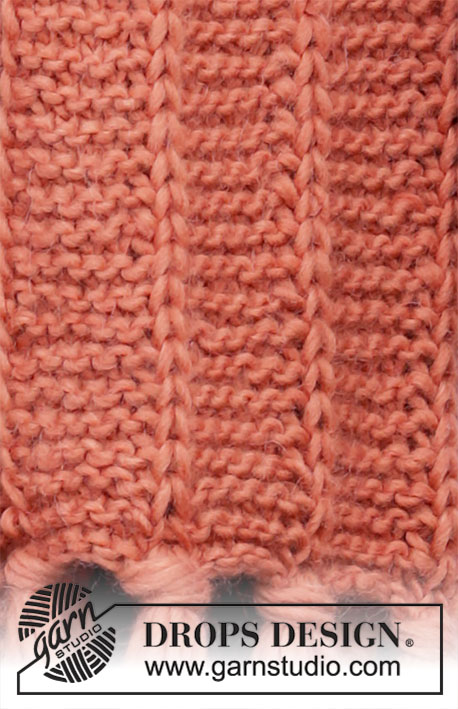





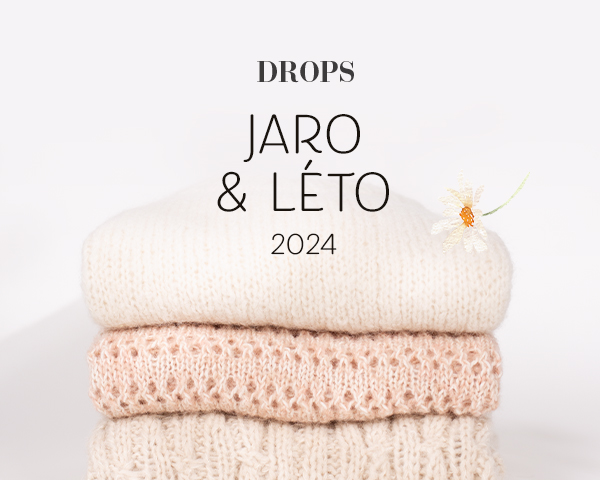
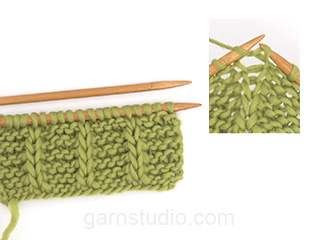




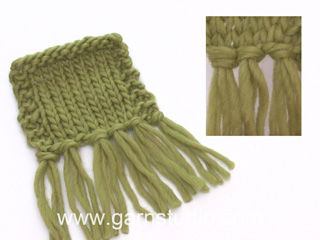
























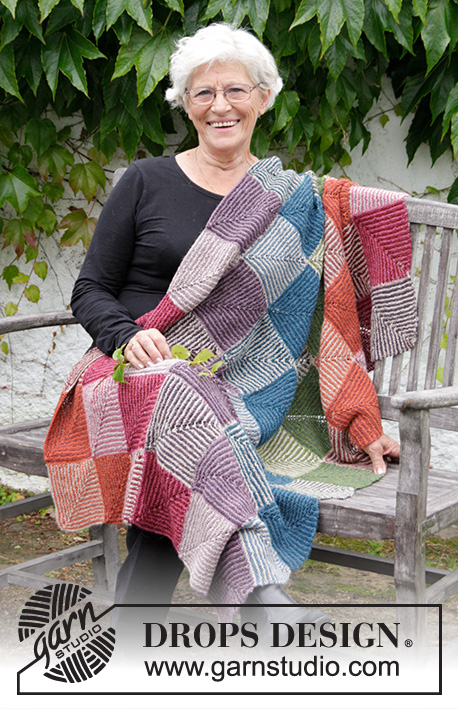







Komentáře / Otázky (11)
Hi! I just knitted the scarf as a beginner and it came out lovely so thank you for this pattern! I am just confused about the instructions for the hat. Firstly; is there a way I could adapt it to use straight needles instead of circular and then just sew it in the middle? Secondly; what does knitting 2 by 2 mean Thirdly; why do you knit the rib, then go to A.1. and then start knitting rib stitches again? doesn't the rib stay at the bottom? Thanks!
12.09.2019 - 12:19DROPS Design answered:
Dear Deborah, you will find how to adapt a pattern into straight needles here - knit the stitches 2 by 2 together means you work K2 tog across. At the top of hat, before starting to decrease, you don't work pattern A.1 anymore but rib K1/P1 then start to decrease. Happy knitting!
12.09.2019 - 13:20Hello This is a lovely pattern, however, in the photo it looks like the scarf has been knitted with the salvage stitch at the beginning of each row, I.e. the side edges of the scarf are very neat. It would have been good if you incorporated that technique in your demo of the pattern video.
09.08.2019 - 16:51Var är a1 och a2? bild saknas
24.03.2019 - 05:47DROPS Design answered:
Hej. Nu finns diagrammen längst ner på mönstret även på den svenska översättningen. Lycka till!
25.03.2019 - 11:30Bonjour, les explications du diagramme modèle 184-16 pour l'écharpe ne correspondent pas pour des rangs aller retour. Il me semble que tout se tricote à l'endroit sauf la maille double qui elle se tricote à l'envers lorsque l'on a fait un premier rang à l'endroit. Est-ce bien cela ?
31.01.2019 - 11:50DROPS Design answered:
Bonjour Mme Bereaux, les diagrammes montrent les motifs, vus sur l'endroit, pour tricoter A.1 en rangs, on tricote sur l'endroit (rang1): 5 m end, 1 m double et sur l'envers: (on lit de gauche à droite: 1 m env, 5 m end. Bon tricot!
31.01.2019 - 13:21Wenn ich den Schal nach Anleitung und Diagramm A.1 stricke, entsteht kein Bild, das krausrechts ist. Die Hinreihen werden rechts, die Rückreihen links gestrickt. Das geht zumindest aus der Anleitung so hervor. So entsteht das Bild glattrechts. Ist das Diagramm falsch?
29.01.2019 - 14:08DROPS Design answered:
Liebe Frau Böhm, die Diagramme zeigen alle Reihen, wie sie von der Vorderseite aussehen, wenn Sie in Reihen stricken, stricken Sie die 5 ersten Maschen in A.1 rechts (sie sehen wie links von der Vorderseite aus), diese 5 ersten Maschen in A.1 werden links in der Runde gestrickt. Viel Spaß beim stricken!
29.01.2019 - 16:31Hej gør man det samme med at stikke højre pind igennem masken fra forrige omgang, når man strikker vanter?
09.10.2018 - 10:06DROPS Design answered:
Hei Josefine. Ja, du strikker A.2 som anvist også på vottene. God fornøyelse.
16.10.2018 - 13:16Vielen lieben dank
05.10.2018 - 12:02Irgendwas mache ich beim Schal fals die Seiten rollen sich bei mir ein Danke für die hilfe
05.10.2018 - 11:03DROPS Design answered:
Liebe Frau Heimpel, beim Schal stricken Sie die ersten 5 Maschen krausrechts (= immer rechts stricken) und die 5. Masche in A.1 soll bei der Hinreihe 1 Masche tiefer rechts gestrickt, und bei der Rückreihe links gestrickt. Viel Spaß beim stricken!
05.10.2018 - 11:54Forstår ikke: stik højre pind gennem masken fra forrige omgang----
06.03.2018 - 08:52DROPS Design answered:
Hej Anne, se her:
How to knit a double stitch from Garnstudio Drops design on Vimeo.
06.03.2018 - 16:25Witam, Nie jestem pewna, czy dobrze rozumiem wzór na szalik. Jeśli na końcu rzędu nieparzystego przerobię 5 oczek z sześciooczkowego okresu wzoru A1, to przy przerabianiu parzystego rzędu będę trafiać podwójnym oczkiem na jedno z oczek lewych, a oczka przerabiane na prawo w rzędach nieparzystych będą tworzyć jakieś niezależne paski. Czy to tak ma być? Nie widzę takich dodatkowych pasków na zdjęciu szalika.
03.01.2018 - 14:11DROPS Design answered:
Witaj Joanno, w rzędzie parzystym przerabiasz schemat od lewej do prawej strony, tzn. zaczynasz od 5 pierwszych oczek schematu A.1 i dalej powtarzasz już cały 6-oczkowy schemat A.1. Pozdrawiam
04.01.2018 - 09:41